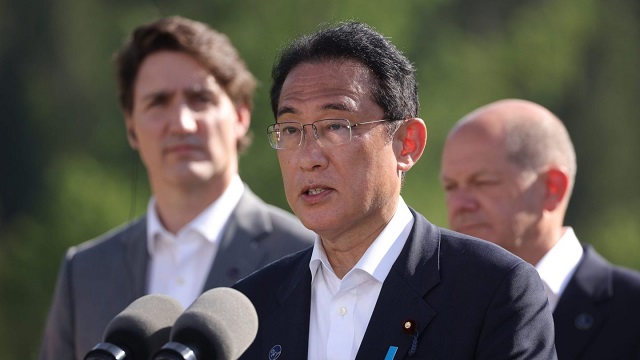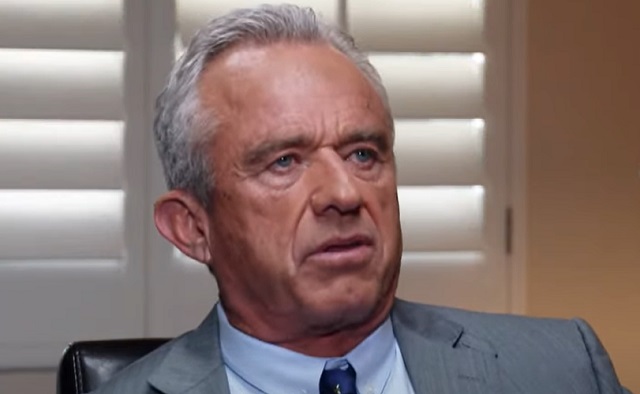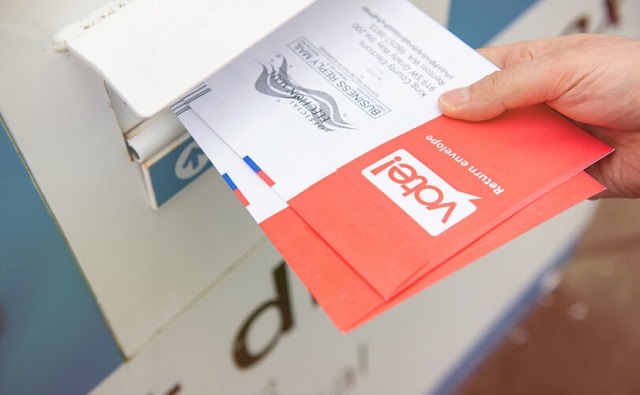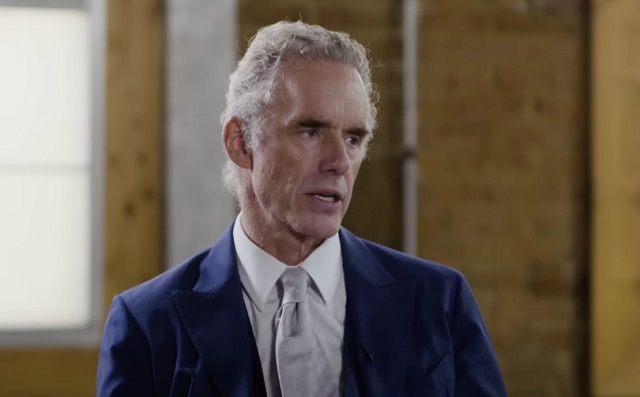Canadian Energy Centre
Canada’s proposed oil and gas emissions cap sends wrong message to allies in Asia: analyst

Prime Minister of Japan Fumio Kishida speaks during the G7 summit at Schloss Elmau, Germany on June 26, 2022 as (L-R) Canadian Prime Minister Justin Trudeau and German Chancellor Olaf Schulz look on. Getty Images photo
From the Canadian Energy Centre
‘We want to fill those pipelines and help Japan and Korea get off Russian supply’
Canada’s proposed oil and gas emissions cap sends a conflicting message to allies in Asia, according to a prominent energy policy analyst.
The plan for the cap – widely seen as a cap on production – is being put together just as Canada nears its first large-scale access to Asia’s growing oil and gas demand, notes Heather Exner-Pirot, a senior fellow with the Macdonald-Laurier Institute.
“Our allies in Asia, particularly Japan and Korea, are waiting for the LNG and the oil,” says Exner-Pirot.
“Everyone knows we only ship to the United States. We haven’t had any real pipeline capacity to the east or to the west. Finally, we’re getting it and now we’re going to curtail production. It makes no sense.”

Heather Exner-Pirot, senior fellow and director of natural resources, energy and environment with the Macdonald-Laurier Institute.
Oil and gas needs in the Asia Pacific region are expected to continue growing through 2030 and 2050, according to the International Energy Agency.
The recently completed Coastal GasLink pipeline is ready to supply natural gas to the LNG Canada export terminal, which is in the final stages of construction and targeted for startup next year.
Meanwhile the Trans Mountain pipeline expansion is weeks away from startup, nearly tripling Canada’s oil export capacity to customers by sea.
The federal plan to cap emissions in 2030 at up to 38 per cent below 2019 levels would require production cuts, according to the Business Council of Canada.
That could threaten world energy security by opening the door to Russia as a bigger supplier instead of Canada, Exner-Pirot says.
“We want to fill those pipelines and help Japan and Korea get off Russian supply and get off OPEC supply, frankly. We want them to have an option,” she says.
“We still haven’t been able to get off Russian oil and gas, and now we want to put in policies that will limit our ability to replace it. Our number one priority should be to replace it.”

A section of the Coastal GasLink pipeline is installed in a challenging section of the Rocky Mountains. Photo courtesy Coastal GasLink
Capping emissions from Canada’s oil and gas sector would come at great economic cost while having negligible impact on the environment, according to analysis by the Montreal Economic Institute (MEI).
“Each time Ottawa forces the Canadian energy sector to contract, it is foreign producers who win,” said MEI public policy analyst Gabriel Giguère.
“Ottawa does not have the means to affect global demand, so reducing local supply will only end up exporting jobs and tax revenues.”
MEI estimates the proposed cap would cost Canada’s economy upwards of $6 billion per year if fully implemented.
Exner-Pirot argues that through initiatives like the Pathways Alliance in the oil sands, Canada’s energy sector already has credible plans reduce emissions and achieve net zero.
“By forcing this abstract date of 2030, you’re making it far more difficult and more expensive, where it will [already] occur within a reasonable timeframe,” she said.
Alberta
Canada’s advantage as the world’s demand for plastic continues to grow

From the Canadian Energy Centre
By Will Gibson
‘The demand for plastics reflects how essential they are in our lives’
From the clothes on your back to the containers for household products to the pipes and insulation in your home, plastics are interwoven into the fabric of day-to-day life for most Canadians.
And that reliance is projected to grow both in Canada and around the world in the next three decades
The Global Plastics Outlook, published by the Paris-based Organization for Economic Co-operation and Development (OECD), forecasts the use of plastics globally will nearly triple by 2060, driven by economic and population growth.
The use of plastics is projected to double in OECD countries like Canada, the United States and European nations, but the largest increases will take place in Asia and Africa.
“The demand for plastics reflects how essential they are in our lives, whether it is packaging, textiles, building materials or medical equipment,” says Christa Seaman, vice-president, plastics with the Chemical Industry Association of Canada (CIAC), which represents Canada’s plastics producers.
She says as countries look to meet climate and sustainability goals, demand for plastic will grow.
“Plastics in the market today demonstrate their value to our society. Plastics are used to make critical components for solar panels and wind turbines. But they also can play a role in reducing weight in transportation or in ensuring goods that are transported have less weight in their packaging or in their products.”
Canada produces about $35 billion worth of plastic resin and plastic products per year, or over five per cent of Canadian manufacturing sales, according to a 2019 report published by the federal government.
Seaman says Canadian plastic producers have competitive advantages that position them to grow as demand rises at home and abroad. In Alberta, a key opportunity is the abundant supply of natural gas used to make plastic resin.
“As industry and consumer expectations shift for production to reduce emissions, Canada, and particularly Alberta, are extremely well placed to meet increased demand thanks to its supply of low-carbon feedstock. Going forward, production with less emissions is going to be important for companies,” Seaman says.
“You can see that with Dow Chemical’s decision to spend $8.8 billion on a net zero facility in Alberta.”
While modern life would not be possible without plastics, the CIAC says there needs to be better post-use management of plastic products including advanced recycling, or a so-called “circular economy” where plastics are seen as a resource or feedstock for new products, not a waste.
Some companies have already started making significant investments to generate recyclable plastics.
For example, Inter Pipeline Ltd.’s $4.3 billion Heartland Petrochemical Complex near Edmonton started operating in 2023. It produces a recyclable plastic called polypropylene from propane, with 65 per cent lower emissions than the global average thanks to the facility’s integrated design.
Achieving a circular economy – where 90 per cent of post-consumer plastic waste is diverted or recycled – would benefit Canada’s economy, according to the CIAC.
A Deloitte study, commissioned by Environment & Climate Change Canada, estimated diverting or reusing 90 per cent of post-consumer plastic waste by 2030 will save $500 million annually while creating 42,000 direct and indirect jobs. It would also cut Canada’s annual CO2 emissions by 1.8 megatonnes.
Right now, about 85 per cent of plastics end up in Canada’s landfills. To reach the 90 per cent diversion rate, Seaman says Canada must improve its infrastructure to collect and process the plastic waste currently being landfilled.
But she also says the industry rather than municipalities need to take responsibility for recycling plastic waste.
“This concept is referred to as extended producer responsibility. Municipalities have the responsibility for managing recycling within a waste management system. Given the competing costs and priorities, they don’t have the incentive to invest into recycling infrastructure when landfill space was the most cost-effective solution for them,” she says.
“Putting that responsibility on the producers who put the products on the market makes the most sense…The industry is adapting, and we hope government policy will recognize this opportunity for Canada to meet our climate goals while growing our economy.”
Business
Decarbonization deal opens new chapter in Alberta-Japan relationship

From the Canadian Energy Centre
By Will Gibson
Agreement represents a homecoming for JAPEX, which first started work in the Alberta oil sands in 1978
A new agreement that will see Japan Petroleum Exploration Company (JAPEX) invest in decarbonization opportunities in Alberta made history while also being rooted in the past, in the eyes of Gary Mar.
JAPEX is seeking to develop projects in carbon capture and storage (CCS), hydrogen and bioenergy. It’s part of the company’s JAPEX2050 strategy toward carbon neutrality.
“This new endeavour is a great opportunity that demonstrates the world is changing but the relationships endure,” says Mar, the province’s former trade envoy to Asia and the current CEO of the Canada West Foundation.
“Alberta’s very first international office was opened in Tokyo in 1981. And we have built a tremendous soft infrastructure that includes partnerships between a dozen Alberta and Japanese universities.”
For JAPEX, the agreement represents something of a homecoming for the company that first started work in the Alberta oil sands in 1978 and operated one of the first in situ (or drilled) oil projects for nearly two decades before selling its stake in 2018.
“We are now aiming to come back to Alberta and contribute to its decarbonization,” JAPEX president of overseas business Tomomi Yamada said in a statement.
Mar says the memorandum of understanding signed this March between JAPEX and the crown corporation Invest Alberta stems from a strong relationship built over decades.
“You can’t be considered a reliable partner for a new venture if you haven’t been a reliable partner for decades in the past,” says Mar.
“Economies change and world’s needs change but strong relationships are important factor in whom you do business with.”
Alberta’s established CCS infrastructure has already attracted new investment, including Air Products’ $1.6-billion net zero hydrogen complex and Dow Chemicals’ $8.8-billion net zero petrochemical complex.
Mar sees JAPEX’s deal with Invest Alberta opening a whole new market of potential carbon neutral investors in the Pacific Rim.
“When other countries who are partners in the Trans-Pacific Partnership (TPP) see JAPEX invest in this decarbonization opportunities and net zero projects in Alberta, it will send a very clear signal to others in the TPP about the potential,” Mar says.
“This deal may come from the decades-long relationship between Alberta and Japan but can also serve as a signpost for decades to come.”
-

 Automotive16 hours ago
Automotive16 hours agoThe EV ‘Bloodbath’ Arrives Early
-

 CBDC Central Bank Digital Currency7 hours ago
CBDC Central Bank Digital Currency7 hours agoA Fed-Controlled Digital Dollar Could Mean The End Of Freedom
-

 COVID-192 days ago
COVID-192 days agoTrudeau gov’t has paid out over $500k to employees denied COVID vaccine mandate exemptions
-

 Addictions2 days ago
Addictions2 days agoWhy can’t we just say no?
-

 International2 days ago
International2 days agoRFK Jr tells EWTN: Politicization of the CIA, FBI, Secret Service under Biden is ‘very troubling’
-

 Business23 hours ago
Business23 hours agoHonda deal latest episode of corporate welfare in Ontario
-

 espionage24 hours ago
espionage24 hours agoOne in five mail-in voters admitted to committing voter fraud during 2020 election: Rasmussen poll
-

 Brownstone Institute6 hours ago
Brownstone Institute6 hours agoThe Numbers Favour Our Side







